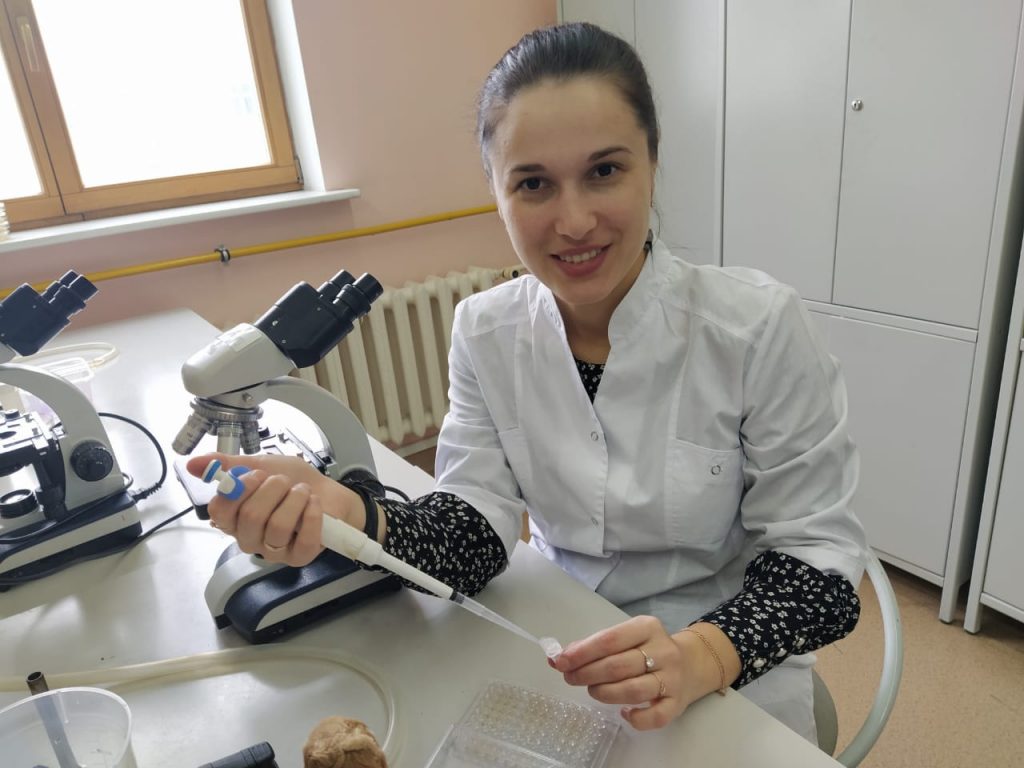Junior Research Associate Guzel Lutfullina to use startup funding to develop antimicrobial drugs for domestic fowl

She is one of the winners of the Student Startup competition for young scientists.
Lutfullina’s project is titled ‘Developing a medication based on bacillar antimicrobial lipopeptides for the modulation of gut microbiota and prevention of infections of poultry birds’.
She comments, “Aviculture is one of the fast-growing sectors of animal husbandry in the world. The use of antibiotics in the poultry business is proscribed because of their influence on gut microbiota and possible development of antibiotic resistance. That’s why there is a need for some substitution to feed antibiotics.”
Her research is concentrated on active strains of Bacillus bacteria and is supervised by Professor Ayslu Mardanova.
“Bacillus strains are finding wider recognition in aviculture because they produce a significant number of metabolites suppressing pathogenic and opportunistic bacteria, enhance gut health, improve the accessibility of nutrients and the morphological structure of bird gut. The high antagonistic activity of Bacillus is attributed to their ability to synthesize various non-ribosomal antimicrobial lipopeptides: surfactin, iturin, fengycin, polymyxin, and kurstakin, which are both active against pathogenic microorganisms and promising as biological surfactants,” adds the interviewee.
The grant will help to prepare a pilot batch of the prospective drug and test it on industrial poultry. Lutfullina explains, “Polymyxin M, a Russian offering in this area, works well against gram-negative bacteria. It can be used in dyspepsia, gastroenteritis, enterocolitis, and pullorosis. The advantage of our lipopeptide-based preparation is that it suppresses a wide range of gram-negative and gram-positive bacteria and modulates gut microbiota to prevent gut infection.”
The team including Guzel Lutfullina has registered two patents on its research and has published a number of related papers since 2016.

